
by Purba | Jan 12, 2022 | Shout out |
Auda Sakho is the mind and founder of Redress Laboratory, a label with origins in the UK, France and India. Redress Laboratory is born from her simple and long-term philosophy around re-using and re-inventing clothes. Her style is influenced by a passion for disrupting the linear production model, architectural minimalism and sustainable living. Today along with Kazi Purba, we will explore the mind of Auda and her plans with Redress Laboratory in Fashionnovation’s exclusive interview.
Tell us something about yourself.
I’m Auda Sakho, the founder of Redress Laboratory. I’ve always upcycled clothes and old materials as a hobby. Even whilst studying and working as a professional designer, I continued to transform discarded materials into unique, sustainable clothing.
Everything I create conveys a message. I believe that clothing is integral to visual storytelling.
Whilst enjoying handpicking and designing clothes, I am equally interested in engaging with my customers. I want to establish an emotional connection between my brand and my consumers.
.
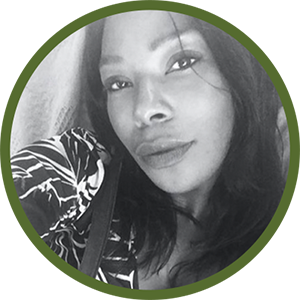
What’s the story behind your brand? What motivated you to establish that?
Following work in the world of mainstream fashion and costume design, I recognised the need for a fashion label with sustainability at its core. I can only do Fashion if Its sustainable.
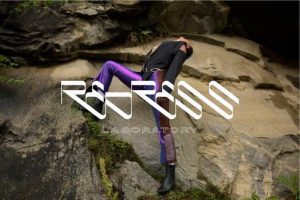
Circularity and sustainability are integral to Redress Laboratory’s ethos. Our team is passionate about making playful and unique clothing without harming the planet. initiate, invent, share, lease, reuse, repair, refurbish, recycle and finally upcycle existing materials and products for as long as possible.
What’s your product range?
Redress Laboratory is an environment conscious, Up cycled Fashion brand and services. Our products range from clothing such as trousers, coat, tops to accessories, handbags, believe that everything can be reused and upcycled.
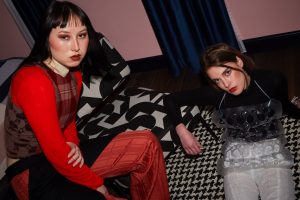
4. What special do you offer to your customers through your brand?
In our search to minimise waste as much as possible, we have put in place a waste take back scheme.In practice, it implies reducing waste to a minimum by collecting existing materials from individuals and customers and they are granted a voucher card in exchange for new items. I think it’s important to bring an emphasis on a circular loop model, so when a product reaches the end of its life, its materials are kept within the economy wherever possible.
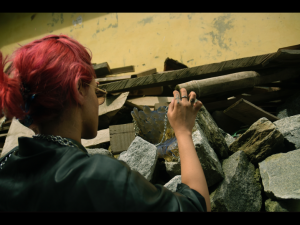
These can be productively used again and again, thereby creating further value. Alternatively, also provide Revamping Service and Sustainable workshops amongst our community.( please see preview of our website)
4. Does your brand care about environment and sustainability? How are you promoting sustainability with your works?
Redress Laboratory remains eco-conscious in every aspect of the brand, for example:
- Redress Laboratory products are made entirely from reclaimed and recycled fabrics. By using discarded materials, have established a circular supply chain which directly regulates natural resources, saves energy and minimises the amount of waste produced.
- Every stage of the production process ensures minimal environmental damage. Redress Laboratory is constantly reviewing the way of operation to remain conscientious about our social responsibility.
- The long term goal of Redress Laboratory is to rethink, research and transform fashion. Sustainable fashion will establish an industry responsible for its environmental impact.
What are your future plans with your brand?
The long term aim with Redress Laboratory is to create and differentiate the brand of products by developing more eco-friendly practices and leveraging technology to make clothing production and consumption more sustainable, from the use of plant-based textiles (bioplastic) and bacteria-based dyes to leveraging a blockchain-based supply chain to increase transparency.
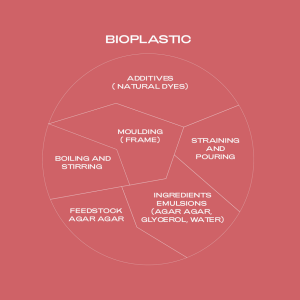
Transparency is at the core of the brand; all the production process information will be provided when a customer purchases our products. They will also have an insight of the breakdown cost of their products, detailing every aspects of production cost and margins for a greater transparency.
Redress Laboratory has a wonderful team where Shreya Malhan is the textile curator, John Moutaris is the videographer and Thomas Hadas is the Visual Developer of the Kickstarter Campaign.
Redress Laboratory is launching their website on 1st of February 2022. They are also launching their Kickstarter campaign on the 1st of February 2022. So, stay tuned to see amzing stuff from them.
Instagram: @redresslaboratory
Facebook: Redress Laboratory
Tiktok: Redresslaboratory
LinkedIn: Redress Laboratory
Website preview
https://redresslaboratory-2.myshopify.com/?_ab=0&_fd=0&_sc=1&key=82f9d9ec9f3e817ff8fb97ce218b710a040dfd99f375d0deb2e29ac50113baee
Lili: A Sustainable Brand for Upcycled Jewelry
Jana’s Amber Design House: A Brand That Is More Than a Meditation
VeNove: The Brand That Makes Comfortable, Stylish and Unique Dresses for the Pregnant Women With Love
If you want to know about M&L Creative, the Number One Choice for Sustainable Brands, you can read it here!
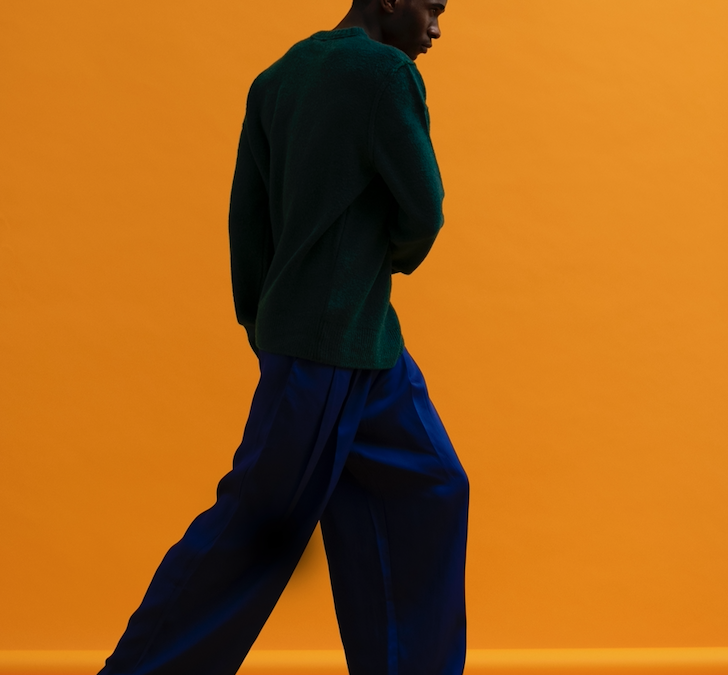
by Purba | Jan 9, 2022 | Shout out |
Fashionnovation is on a journey to introduce you with unique, sustainable, rising fashion brands, start ups and the masterminds behind them. As the continuation of our journey, Kazi Purba explored V’LE Magazine and the mind of its founder through some questions. In our today’s exclusive interview, we take the humble opportunity to introduce you with Bof Setlhare, a visionary founder of V’LE, a start-up based in New York, United States. Having a background in fashion working as a fashion model, keeping the idea of ‘fashion with purpose/fashion for good’, he is using his skills in fashion to manifest that idea to life. Today we will listen to his story of building up a network called V’LE to promote sustainable fashion around the world.
What is V’LE?
V’LE Magazine is a digital magazine focusing on sustainable and ethical fashion. We share academic insights related to sustainability (or lack thereof) in the fashion industry. We noticed that when people think of sustainability in fashion, there’s more emphasis on environmental and social aspects. So, the whole point of V’LE is to highlight other aspects that are not discussed in the mainstream conversations. We discuss political, economic, social, technological, environmental, and legal aspects. In a way, it’s a 360° approach because we recognize the interaction of fashion with all of these aspects. Another core element is our creative side. We do editorial shoots and relate them to the topic so that the articles aren’t too wordy. Lastly, we are a directory for sustainable fashion brands. On our Features page, we have sustainable brands with varying styles for consumers looking to buy more sustainably.
Why did you establish this platform? What was your drive?
I have a background in fashion working as a fashion model. During the covid lockdowns, many industries were going through sudden shifts and that got me thinking about this idea of ‘fashion with purpose/fashion for good.’

Bof Setlhare, the founder of V’LE as a fashion model. Courtesy: V’LE Magazine.
The next step was to figure out how I can use my skills in fashion to bring that idea to life. As a fan of academia, I realized the need for educational resources that promote awareness specifically when it comes to sustainable fashion.

Bof Setlhare posing for a photoshoot. Courtesy: V’LE Magazine.
Who are your audience?
The primary audience is fashion brands and consumers. The great thing is as niche as V’LE is, we cover a broad spectrum of subjects. People in tech, social services, psychology, environmental activism, federal agencies, etc., can find something they relate to. So basically, our audience is anyone interested in conscious fashion and longevity in fashion.
Please share some of your memorable incidents with V’LE.
I was happy when the website surpassed 100 visits lol. To be honest I can’t really single out any memorable incidents given our small size. I literally remember everything we’ve done. Being able to reflect on our operations and see how the process is different for every article, and just be grateful to have worked with amazing people. It’s a special feeling knowing that people (photographers, models, collaborators, and our audience) are giving us their time considering we’re a small startup.

Courtesy: V’LE Magazine
What is sustainability according to your view point? Can we really assure a sustainable future of fashion? How can V’LE support this grand endeavor?
There are 2 ways to look at sustainability; the brand side and the consumer side. The brand side focuses on the supply chain activities (from sourcing raw materials to point of sale) that prioritize sustainability and ethics. On the consumer side, it’s about information and resources that promote conscious consumption of fashion items. It’s also important to note that sustainable fashion isn’t a new thing and many cultures across the globe have been practicing it knowingly/unknowingly. It’s just that this conversation is becoming mainstream mainly due exponential growth of fast fashion and the urgency for climate change action. Sustainable fashion looks different for everyone depending on geography, culture, financial and economic constraints. The idea is to look at areas within one’s life and what role can they play to push the movement forward.
What are your future plans with V’LE?
In the future, we want to incorporate other elements such as e-comm with our own collection. Would also love to launch something in physical form rather than being exclusively digital. Creating a space rich in music, arts, culture, and fashion where people can come and interact.
Website link
V’LE Magazine
Social media links
IG- https://www.instagram.com
Facebook- https://www.facebook.com/VLE
LinkedIn- https://www.linkedin.com/company/vlemagazine
Tiktok- https://www.tiktok.com/@vlemag
Twitter- https://twitter.com/vlemag
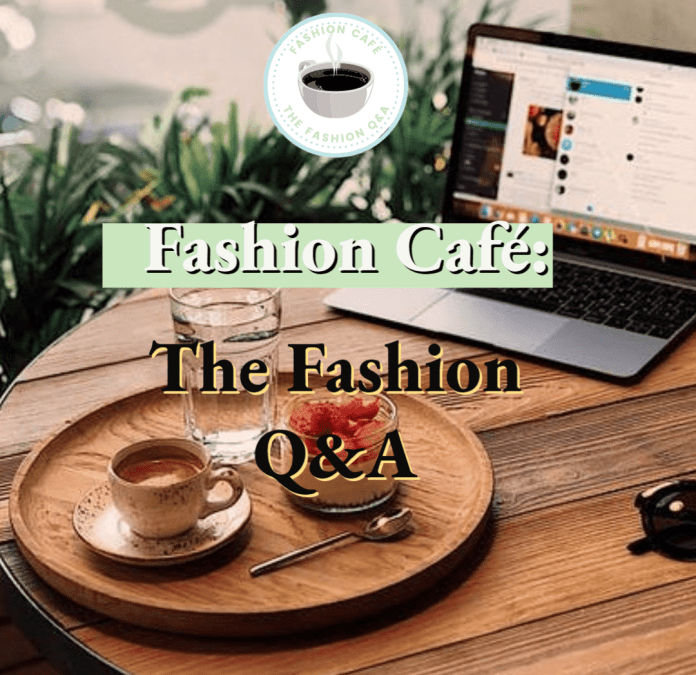
by Purba | Nov 24, 2021 | Fashion events |
The FREE live event will take place on Friday the 26th of November at 3:00 p.m. CET / 9:00 a.m. EST. When you register for this event, you’ll get the chance to win an Amazon Card that can be used to buy a fashion design or business book to learn more and speed up your success! Link given in the end. The lockdown has made a lot of people think about where they are in their lives and about their careers. Some of them have even started to work for themselves. With the Fashion Café, Annette Lennerup from Fashion Design Tribe is going to help new fashion entrepreneurs by answering as many of their questions as possible. The Fashion Café is a live Q&A event hosted by Annette Lennerup from Fashion Design Tribe, where they’ll be answering questions about designing, manufacturing and starting your own brand. It’s a virtual event, so you can do it from your own home with the comfort of a nice cup of coffee. It will take place on Friday the 26th of November at 3:00 p.m. CET / 9:00 a.m. EST. During the event they’ll be answering questions like ‘How do I earn money to start my own fashion brand?’, ‘What tools should I use when I’m designing my collection?’ and ‘How do I negotiate my minimums with a manufacturer?’ When you register for this event, you’ll get the chance to win an Amazon Card that can be used to buy a fashion design or business book to learn more and speed up your success. Once you have registered for the event you will get an email with more details about how to join the live stream.
More about Annette Lennerup and why she is hosting this event:

Annette Lennerup, The founder of Fashion Design Tribe, supporting fashion brands and entrepreneurs with her 18 years of industry experience. Photo courtesy: Annette Lennerup
Annette said, “For the past 18 years I’ve worked in the fashion industry and the last 8 years I’ve been working with helping start-up and small fashion brands to learn about the industry and take their design to production. This is my passion and as I want to help a lot more brands and entrepreneurs I decided to host this event to share my knowledge.” “I have learnt about each step needed and know exactly what they need, both by helping others and also by having my own fashion brand for 6 years,” she added. From her vast experience, Annette learned how to create the best tech packs, how to find and communicate with manufacturers and how to sell the products, and she has also helped others do the same. Annette’s goal is to teach you to make the process of having a fashion brand much easier than going at it alone. You will love the community and have lots of fun with like-minded fashionpreneurs. You will also learn a lot about the fashion industry and filling in your gaps and helping you launch your product! All you have to do to join in, is to sign up for free! Just go to this link https://www.subscribepage.com/fashioncafe Don’t forget to join Annette’s Facebook group to meet like-minded fashionpreneurs. www.facebook.com/groups/fashiondesigntribe If you have something worth sharing to the world and get featured in Fashionnovation, e-mail us at fashionnovationfd@gmail.com
To know about Free and Paid Fashion Illustration courses, you can go here!
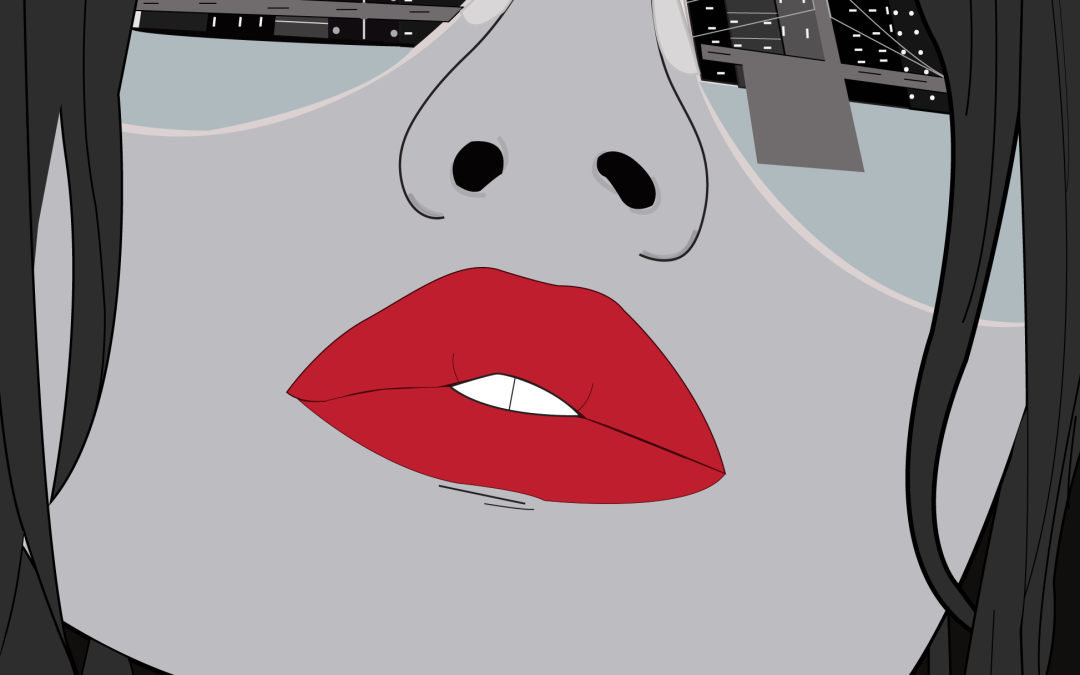
by Purba | Nov 23, 2021 | Fashion Illustration, Our works |
Fashion illustration is a great tool for fashion designers to express their ideas to their potential customers. As a picture can speak a thousand words, fashion illustration lets a designer to communicate easily. Fashion illustration is taught in every fashion institutions and Department of Textile Fashion and Design of Bangladesh University of Textiles is not an exception. Here are some of the stunning fashion illustrations from different batches of the students and members of Fashionnovation.
1. Fashion Illustration with print repeat designs by Sumaiya Ferdousi Arpa
Sumaiya Ferdousi Arpa’s striking illustrations with seamless print repeat designs are striking. The floral designs with vibrant colors are an expression of femininity.
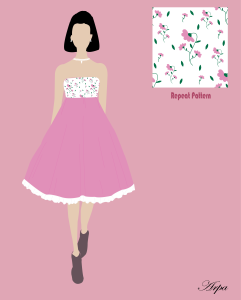
Fashion illustration by Sumaiya Ferdousi Arpa. Fashionnovation
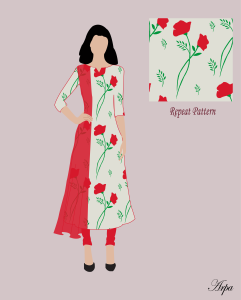
Fashion illustration by Sumaiya Ferdousi Arpa. Fashionnovation

Fashion illustration by Sumaiya Ferdousi Arpa. Fashionnovation
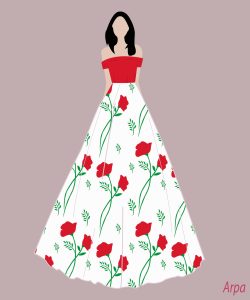
Fashion illustration by Sumaiya Ferdousi Arpa. Fashionnovation
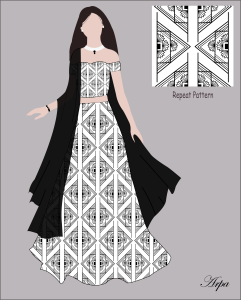
Fashion illustration by Sumaiya Ferdousi Arpa. Fashionnovation
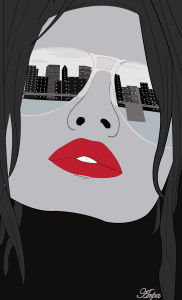
Fashion illustration by Sumaiya Ferdousi Arpa. Fashionnovation
2. Fashion illustration of Bangladeshi couple by Gulshan Ara Tasnim
Gulshan Ara Tasnim has done some amazing tasks with the dress design of Bangladeshi couple where she has designed saree and punjabi. The vibrant color and the details are noteworthy. She has also produced an anime type character which represents her Otaku feelings.
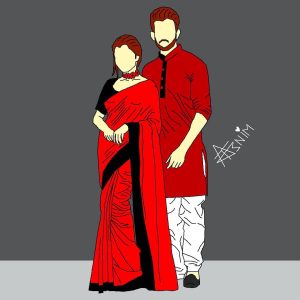
Fashion illustration by Gulshan Ara Tasnim. Fashionnovation
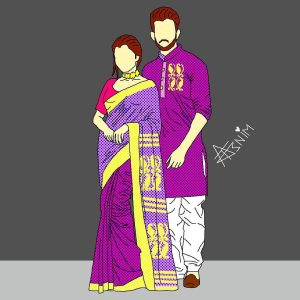
Fashion illustration by Gulshan Ara Tasnim. Fashionnovation
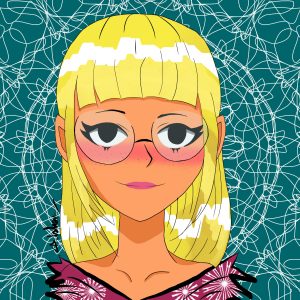
Fashion illustration by Gulshan Ara Tasnim. Fashionnovation
3. Western Dresses by Jinnat Ara Ferdous
Jinnat ara ferdous has experimented with western dresses and her striking detail works are visible which shows her expertise of focusing on the details. She has done some intricate patterns on her dresses and worked with darker colors. All in all her details her praiseworthy and as a student these works are certainly a sign of excellence!
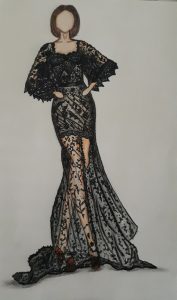
Illustration by Jinnat Ara Ferdous. Fashionnovation
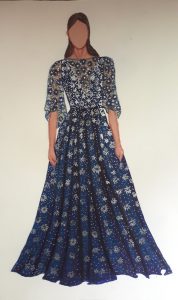
Illustration by Jinnat Ara Ferdous. Fashionnovation
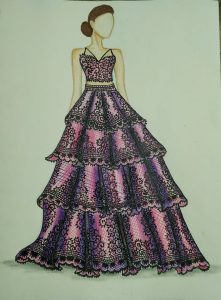
Illustration by Jinnat Ara Ferdous. Fashionnovation
That’s all for today! Fashionnovation will showcase more of such amazing works in the future. Till then stay tuned and don’t forget to send your works like these to our email address: fashionnovationfd@gmail.com
Take care!
As you have read and seen these amazing works of fashion illustration, you might be interested to learn how they are done! Don’t worry! We got you covered here!
You can also read this premium article on the 21st century fashion!
And if you want to read one of our premium case studies on Fast Fashion Vs Slow Fashion, you can go here!
Fast Fashion Vs Slow Fashion: A Case Study
You can also see some more wonderful works of students below:
12 Basic Fashion Studies Sketches Done by Students That Will Inspire You In Your Next Fashion Study Lab Work
To be more creative like these fashion illustrators or to know the relationship between creativity and fashion, you can read this article named Creativity and Fashion Design!
To see how creative our members are, you should read another of our article where they have drawn some basic fashion sketches which will blow your mind!
Our Fashionnovation members don’t only draw sketches, they also create many creative and complex draping. To check that out, you can check our Fashion draping, variation of cascade article!
If you want to partner with us, collaborate, write articles or simply want to contact, feel free to email us at: fashionnovationfd@gmail.com
We always check your emails!
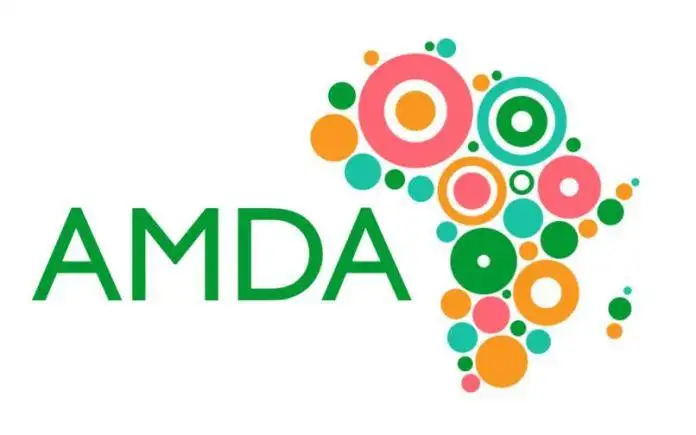
by Purba | Nov 23, 2021 | Shout out |
AMDA (Apparel Merchandising & Design Association) of Auburn University, Alabama and how they are working with the fashion students to shape the fashion world
What is AMDA?
AMDA is a platform available for the students in the merchandising and design majors within the Consumer and Design Sciences Department in the College of Human Sciences. The full form of AMDA is Apparel Merchandising & Design Association. It’s handled by Auburn University. AMDA represents the AMDP (Apparel Merchandising, Design & Production) program on campus and locally through private and public meetings and events. There are group meetings for members throughout the school year along with special events planned by the executive board. AMDA hopes to promote the AMDP students and facility by collaborating with other similar organizations and businesses to put on fashion shows, clothing drives and scholarships. AMDA was created to support and encourage AMDP students in their education and future careers within the apparel industry.

Auburn University’s Apparel Merchandising & Design Association. Source: AMDA Instagram page
AMDA’s Activity:
1. Fashion Event:

Fashion Event by CADS and AMDA. Source: AMDA
In 2011, the newly-formed AMDA, the professional organization for Auburn apparel students, relied on local connections to arrange the premiere Fashion Event. Accessories were borrowed from a vintage shop, a salon in town provided hair and makeup and even venue space was donated to the effort. Everything down to the music – played then on an iPod – was planned with just a $300 budget and students’ drive to succeed.
But at last, with attendance nearing a thousand, the Fashion Event has become widely known as Auburn’s premier creative showcase of student work, connecting apparel students with the industry’s best internships and job placements

Fashion Event by CADS and AMDA. Source: AMDA
And now whoever wants to see unconventional feats of fashion and fresh apparel design are invited to experience The Fashion Event – Auburn University’s premier fashion showcase featuring creations by the next generation of fashion designers and merchandisers. Actually this fashion event is a fashion showcase featuring creations by the next generation of fashion designers and merchandisers.
Year after year, students have said The Fashion Event is an invaluable experience for aspiring apparel designers and merchandisers, offering them the opportunity to learn the ins and outs of a design show before they even graduate. ty. The purpose of the event is to showcase the work of AMDP students demonstrating their creativity, versatility, and capability as future fashion professionals in multiple career paths.
Fashionnovation Your Mentor Talks’ First Episode with Ms. Ummey Hani Barsha
2. AMDP:
The AMDP program offers two undergraduate options — Apparel Merchandising (APME) and Apparel Design and Production Management (APDP) – as well as Master’s and PhD level opportunities. Auburn’s nationally ranked apparel programs do a great job of preparing the graduates for careers in today’s global apparel industry. An integrated approach to studying apparel throughout the supply chain provides students with the education and experiences to become a valued member of firms throughout the apparel and related industries.
3. “SWATCH” Magazine:
In the fall 2020 semester, officers in the AMDA, created a magazine named “SWATCH”, a student-driven publication. This magazine features original content and innovative designs from Auburn’s apparel students in the College of Human Sciences.

SWATCH magazine by Auburn University’s Apparel Merchandising & Design Association. Source: AMDA
SWATCH magazine boosted morale, encouraged creativity and provided valuable experience for Auburn students amid the COVID-19 pandemic. This magazine has published many blogs within this recent times.
4. Sustainable Course:
AMDA provides a sustainable course which is actually about fashion & sustainability through which student can understand luxury fashion in a changing world & can be aware about maintaining sustainability.

Auburn University’s Apparel Merchandising & Design Association
Future Goals:
1.AMDA wants to build up student network with professionals in the industry which will help them to enrich their practical knowledge. And thus they can create relationships & obviously will be benefitted to lead internships & jobs.
2. They are focused on advancement throughout the graduates’ career. Lifelong learning and transferable skill sets are emphasized.
3. AMDA wants to make “A Healthier U” & already students of AMDA are committed to using repurposed fabric for handmade, fashionable masks. Their target is to sell every mask for $5 and to place the orders by the end of the day.
https://www.linkedin.com/company/apparel-merchandising-and-design-association#:~:text=AMDA%20is%20an%20organization%20available%20for%20the%20students,locally%20through%20private%20and%20public%20meetings%20and%20events.
http://ocm.auburn.edu/newsroom/campus_notices/2021/01/071106-auapparel.php
https://www.swatchbyamda.com/
https://www.instagram.com/p/CO59zdhtkCd/
http://ocm.auburn.edu/newsroom/campus_notices/2020/07/241351-mask-fundraiser.php
-Team Members:
1. Tamanna TAbassum
2. Gulshan Ara Tasnim
3. Nazmin Akter Shaila
4. Nashita Ahmed
You might also be interested to read about National Institute of Fashion Technology (NIFT), Hyderabad, A Heaven for The Fashion Learners
You might also be interested to read about Fashionnovation Your Mentor Talks’ First Episode with Ms. Ummey Hani Barsha!
As you’re interested in fashion design learning and activities, you might also be curious about how much a fashion designer makes hourly, daily, monthly and yearly. To know that read this article.
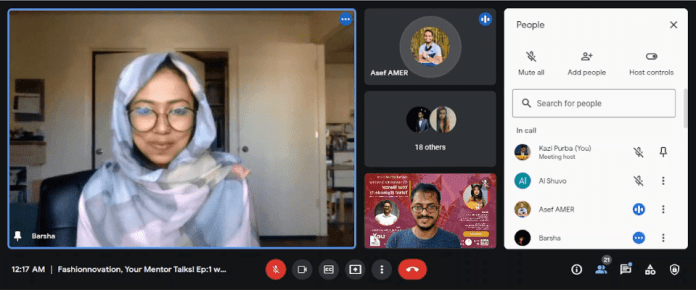
by Purba | Oct 28, 2021 | Fashionnovation events |
On September 26, 2021, Fashionnovation arranged a session with Ms. Umme Hani Barsha, an ex-student of BUTEX batch-38 and also Adjunct faculty of Department of Textile Fashion & Design (TFD) of Bangladesh University of Textiles (BUTEX) who is currently studying MS in Consumer & Design Science, majoring in Design and Applied Arts at Auburn University. She is our first guest in “Fashionnovation Your Mentor Talks.” She is one of the dearest mentor and well-wisher of Fashionnovation and she supported the platform from the beginning of its journey, right from 7 July 2018.
In that session, our discussion areas were higher studies in fashion, building up and honing skills related to fashion and how to enjoy life to the fullest-valuing each and every experience we gather. In the session, BUTEX 43, 44, 45 & 46th batch joined spontaneously and all credits of managing & directing the session goes to the Founder & President Kazi Farhan Hossain Purba.
Our guest- Ms. Barsha started the session by stating the most valuable advices of her Professor which are- Always ask questions! Because in graduation life, whoever is curious to know more, he/she will be more successful in his/her life.
Fashion design higher study guidelines:
Ms. Barsha then guided us about higher studies. If a student wants to pursue his higher education in Europe, then the student must have an excellent portfolio. European Universities demand more practical knowledge in the design sector that can be shown through portfolios. Students who are interested in studying in the U.S.A, mostly need to take GRE. In many institutions, they demand good verbal scores on GRE. A few institutions waived GRE recently also. In the USA, very few universities offer textile engineering degrees directly. One of them is North Carolina State University. Students may look at other departments like dept. of Material Science (students from the dept of Fabric & Yarn engineering), dept. of Chemical engineering (students from the dept of Wet Process Engineers & Dyes and Chemical engineering), dept. of Industrial engineering. Most of the institutions offer graduate degrees in Apparel Merchandising and Apparel Designing or Fashion Designing under the department of Consumer and Design Sciences or Agriculture.
Then if you want to go to Germany, fashion design students may face some challenges. Usually, there are no tuition fees for most of the courses but in fashion design as well as other art-based subjects such as architecture, and photography, students are required to pay tuition fees. Few colleges have no tuition fees but they teach in the German language instead of English. This is the scenario for many other European universities like Italy, France, and the Netherlands. If they know their language, then they can apply for Dutch and French scholarships respectively. Italy, Netherlands, New Zealand, and Denmark also have textile-related universities as well as they offer graduate degrees in fashion. ArtEZ from the Netherlands offers a master’s in fashion in English, and they have scholarships. In New Zealand, you can get a government scholarship in the design sector from Auckland University. For applying in Denmark, one must complete the first level of their language. In Japan, there is a great fashion design school named Bunka Fashion College which ranks in the top 20 in the world. In Hong Kong Polytechnic, there are mainly PAD courses but you can also go through your graduate level here.
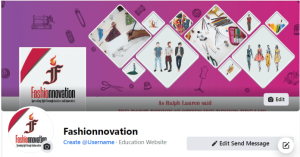
Then if you want to go with Australia or Canada, it will be suitable if you can go on a fully funded scholarship. Pertinently, it must be included that there is only one university in Canada named Ryerson that offers a graduate degree in fashion design. The University of Toronto, the University of Manitoba, and the University of Alberta offer textile-related subjects like material science and other degrees. In Australia, RMIT offers a graduate degree in fashion design as well as textile engineering. There is a scholarship for women but that requires two years of working experience.
You will be happy to know that there was a special guest in our session whose name is Mr. Asef Amer Priyo who is also our BUTEXian senior from the same batch of Ms. Barsha. And he is now working in Decathlon Sports Bangadesh, having working experience of 4.5 years in the industry. He advised to enrich English communication skill, presentation skill and learn Microsoft Excel & Powerpoint from undergraduate level. He clarified about the job sectors of Textile Fashion Design as well as Textile Engineering. He said actually one will get a job or not it totally depends on the performance at the interview board and how much your CV is enriched. Also you must have a very strong portfolio. And at the interview board, you must know what you say and know what you know.
Then again Ms. Barsha said a fashion designer must have knowledge about the fabric, its drapability, texture, etc besides art and design. Because fabric, stitches, pattern-these all are strongly connected with fashion.
When one of the participants of that session asked about the importance of CGPA in higher studies, Ms. Barsha replied that a high CGPA is not a must for applying for foreign scholarships. But if you want a fully funded scholarship and a good subject as per your choice then you will be much benefited if you have a high CGPA. But don’t be upset if it’s by chance low because you can cover it up with other facts like having a great portfolio as well as achieving high scores in speaking & writing on IELTS and GRE scores.
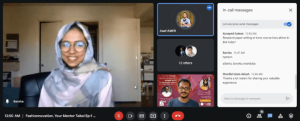
Mr. Asef Amer Priyo was sharing his vauable experience with the audience.
Is having a published research paper important for higher studies?
Another question came from the participants about the importance of research papers. Madam replied that actually on the master’s level, teachers of foreign universities do not really expect research papers from the students. Students may have a review paper which is helpful also. But one should have a clear knowledge of their research interests. She again mentioned having a strong portfolio always helps. She referred to a YouTube channel named Zoe Hong to enrich your portfolio. She also suggested a site named issuu.com see many kinds of portfolios there.
Ms. Barsha said that during her application for MS, she categorized the ranking of the university where she applied and research interests and if the university provides funds or not. Again another student asked her about what can the student do with fashion degrees. Madam replied there are fashion photography, visual merchandising, fashion merchandising, sourcing sector & designing sectors. Last, of all, she stressed upon especially for fashion design students to learn Adobe software like Adobe Photoshop, Adobe Illustrator, etc.
At last our special guest Mr. Asef gave us some life hacks. He said,”Forget about being disheartened. No knowledge is small, no knowledge is short! So if you have leisure, it’s better to learn something new. Always use your time efficiently.” Then Barsha madam suggested, “Obviously do work but enjoy your life to the fullest in your undergrad!”
It was really an amazing session! We learnt a lot from Ms. Barsha & Mr. Asef. We are expressing our gratitude to them and the organizer of this session, Mr. Kazi Farhan Hossain Purba. Hope that we will get more sessions like this & will be able to learn a lot!
Nashita Ahmed
Dept.Environmental Science & Engineering,
Bangladesh University of Textiles (BUTEX)
ID: 2020-1-10-041
You can also read our article about Auburn University’s AMDA, their activities and goals!
Auburn University’s AMDA, Their Activities & Goals
You might also be interested to read about National Institute of Fashion Technology (NIFT), Hyderabad, A Heaven for The Fashion Learners
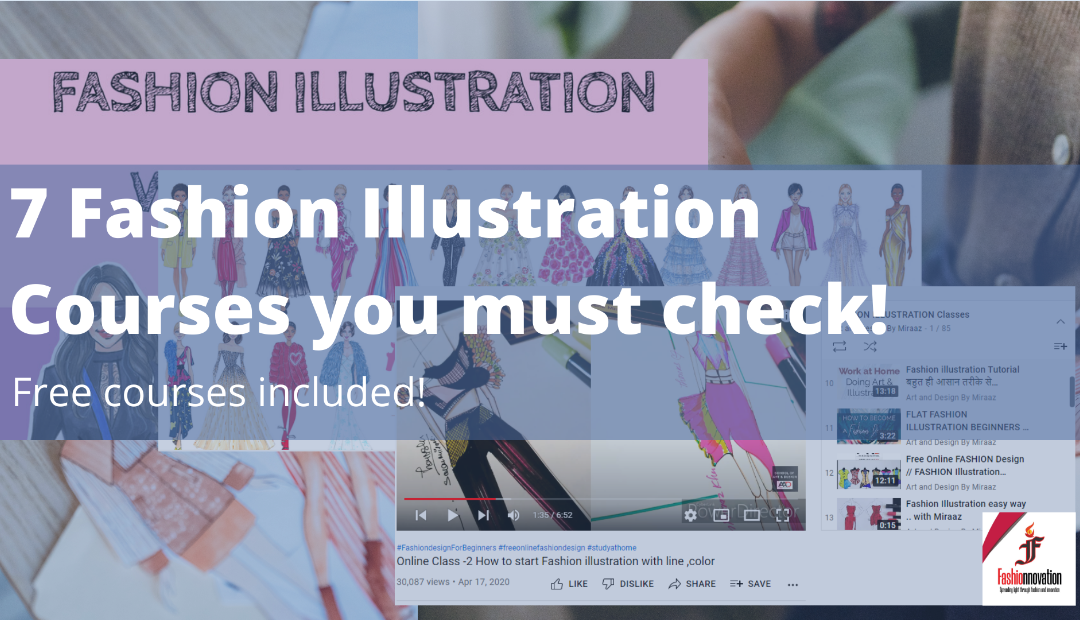
by Purba | Oct 16, 2021 | Fashion Illustration |
If you are a fashion designer, you must have sought for free fashion illustration courses at least for once. In a fashion illustration course, you learn to draw your ideas on a paper meticulously with proper guidance packed in a cocktail of experience worth of many years. But sometimes it becomes tough to decide which course to choose as there are so many free Fashion illustration courses! In this particular article, we are going to drive you through 7 most effective fashion illustration or digital fashion illustration online courses for beginners that we have found in the web to smoothen your decision making. Not all of them are free but we have selected two free courses as a surprise for you in the end! So, let’s begin.
It’s a 4 month course with 4.4 ratings to learn the simple techniques of how to draw fashion figures and postures which is created by Wanwisa Rianrungrueng. It costs $29.99.

Basic fashion illustration course by Udemy. Courtesy: Screenshot taken from their official website.
What you will learn:
- It is an ideal course for a beginner to an intermediate.
- To draw the fashion figures starting from the basic understanding of the 9 head proportion, body elements from head to toe, movement and posture to fashion poses with garments.
- You will get feedback on your sketches.
What this course includes:
→ 2.5 hours on-demand video
→ 3 articles and 7 downloadable resources
→ Full lifetime access
→ Certification of completion
Who are eligible for this course:
˃ anyone who is interested in fashion illustration.
˃ Advance learners also can enroll it.
As you’re interested in learning Fashion Illustration, you’ll also be excited to check 12 Fashion Illustrations Done by Students Which Will Blow Your Mind!
It’s a 6 weeks long online course where one will work with a professional illustrator to develop one’s personal style of illustration and created a range of expressive pieces to add to their portfolio. This course costs £500.00. There are 7 different batches for admission and all batches are UK timed.

Fashion illustration online short course by London College of Fashion. Courtesy: Screenshot taken from their official website.
What you will learn:
- Create your own personalized drawing style
- Combining structured composition into your designs
- Good skill at create artwork using multiple medium including ink, markers, watercolors, crayons and pastels, collage, digital and mixed media
- Illustrate the human body, and to draw fashion garments and clothes
- Enhance your creativity to create original designs by using original concepts and themes
- Using your designs to build up your portfolio
- Evaluating your work and others within the group
What this course includes:
→live online lessons, lessons recordings
→access to VLE with course content
→2 weeks online access
→support from the forums
→certificate on completion
Who are eligible for this course:
All levels are welcome for this course. Anyone who is looking for to find expression through another medium or who wants to develop his sketching and illustrating skills is welcomed for this course.
You can also read another of our premium article on Fashion in the 21st century here!
This course is designed by Joanna Baker with all of her favorite methods and techniques for rendering fashion illustration. You will also find her on YouTube.

Figure 2: Fashion illustration course by London College of Fashion.
There are several illustration courses come with different cost. The fashion illustration with marker rendering for beginners course costs $349. In this course one will not only learn to draw basic fashion figure but also learn to sketch a basic fashion runway figures.

Joanna Baker’s students’ review about her fashion illustration course. Courtesy: Screenshot taken from the official website.
What you will learn:
- To sketch the basic runway figure, different body shape and size, pose variation
- Acquainted with different markers techniques, patterns and popular fashion textures
- To sketch faces and rendering different skin tones and hair colors
- To sketch hand, feet, ankle easily
- Watch 3 full illustration demos
- Help to create a good portfolio
What this course includes:
→11 modules with 26 HD videos
→downloadable 16 practice worksheet
→downloadable 7 template guides
→copic marker guide
→shoppable art supply list with links
Who are eligible for this course: anyone can enroll it.
Here a glimpse of some feedback

If you want to read one of our premium case studies on Fast Fashion Vs Slow Fashion, you can go here!
This self-paced online course is designed by professional fashion artist Rongrong DeVoe. This course costs only $497 and it gives lifetime access anywhere you go.

Fashion illustration with Rongrong. Courtesy: Screenshot taken from the official website.
What you will learn:
- To draw female bodies.
- Be able to color your illustration using Copic markers or any other markers.
- To draw face in various ethnicities.
- Final editing using any Photoshop to add backgrounds and quotes.
- Get tips on how to practice and grow your illustration skills.
What this course includes:
→ Template of various body types and angles, face charts, fashion objects and accessories to practice coloring textures and patterns.
→ 4 hours of video teaching content
→ List of tool which will be used
→ Books and online resources
→ Rongrong’s 11 page fashion illustration coloring book and secret list.
Who are eligible for this course:
Whoever been interested in fashion illustration or have some knowledge of drawing, but want to sharpen this skills further are welcome to enroll it. Also if you are a graphic designer or creative who wants to offer fashion illustration as a new service, you should come and join this one.
The art students league of New York designed a complete drawing program to enable the artist as an editorial fashion illustration. It’s an online based course, only on every Tuesday at7.00-8.30pm on zoom which will instruct by Chuck Nitzberg. This course costs only $115.

The art student league of Newyork, fashion illustration course
What you will learn:
- Formal art concept or over-all
- Basic principles of fashion proportion, line, and shape
- Various techniques using materials such as charcoal, graphite, gouache, and markers
What this course includes:
→ One or two weekly zoom meetings
→ A impressive toolbox of concepts
→ A live model will be provided at each session to experiment
Who are eligible for this course:
Any person, beginner or advanced, who wants to draw the human figure with cloths are welcome to enroll it.
Fashion Illustration classes by Art and Design by Miraaz:
This is a YouTube channel of Miraaz who is an Indian fashion designer, tribal artist.

Basic fashion illustration course by Udemy. Courtesy: Screenshot taken from their official website.
Here contents are uploaded in both Hindi and English. You can also buy Fashion Design Course Book online here. You will find the below courses there-
This includes 219 videos from which you can learn about basic fashion studies to designing, drafting, cutting and sewing.
This includes 85 videos to enrich you with illustration. materials, colors knowledge. Also provide a lot of techniques on fashion illustration.
Besides that, there you can find several sewing techniques and method. I can assure you that, it worth. Link is provided below- https://l.facebook.com/l.php?u=https%3A%2F%2Fyoutube.com%2Fchannel%2FUCbXsn4nfz90dFMOdWsFblrw%3Ffbclid%3DIwAR0vfiVkWRWllYPolp-_ymdm2_gkyNH30UuHO4jCaqGSW4B1GbOfiee5rAA&h=AT10PeCEQgbYHRAcwVJ9gt60bwYnomEU0uKOA0-RLszdkSdmXqkhSnUeCqoWzP_EOv7i3t15GxhosIdxSjgcgUej-6hafnRhBZsS7A7NmbB0tG1D3M57zqqC1XYTGFSGIedI9Q
Ignite India Education:
This is India’s largest online design education platform. There you will find free online Fashion Illustration course which includes 36 videos. And also a free online Fashion Design course which includes 49 videos. Both are beginner friendly courses.

Fashion illustration course by Ignite India Education. Courtesy: Screenshot taken from their youtube channel.
So, if you are thinking about learning fashion illustration or improving your skills, it is not too late!
Enroll in any of the above suitable courses and become a fashion illustrator.
Ria Debnath Department of Textile Fashion & Design, Bangladesh University of Textiles (BUTEX)
You can read about our premium article written on Fashion in the 21st Century!
As you are interested in fashion illustration, you’ll love to read this interesting article:
If you want to know about the relationship between Chemistry and fashion, you can read this article!
Risen Brand Jeans: A One Stop Solution for High Quality Jeans
by Purba | Oct 11, 2021 | Top Trends |
[quiz-cat id=”1108″]

by Purba | Oct 4, 2021 | Top Trends |
Fashion Nova, The Fast Fashion Brand, Ready For The Halloween!
Using Psychology at Their Vantage Point
Fashion Nova is a fast fashion retail company, widely celebrated for their exotic and bold dresses in the US and all over the world. To sell their fast fashion products, they are always utilizing practical human psychology and using everything at their advantage, which is really something worth studying. Though Fashionnovation studies sustainable fashion and promotes such brands, it is worth investigating why fast fashion brands are so much popular in customers minds. Recently I visited Fashion Nova’s website to see their collections and what they are doing for the upcoming Halloween and how they are increasing their sales by playing with psychology!
Fashion Nova First Welcomes You With an Innovative Non-Deniable Offer!
Will you take for 10% off or Do you want to pay the full price?
As I visited their website, I was stunned to see their business strategy! Their brains must be on steroid. Can’t believe? Just look at this!

Fashion Nova’s irrefutable offer! Courtesy: Screen shot taken from their website
To receive their offer, they have only given me two options-Take their 10% off or ‘I will pay full price’! Hahaha! No escape from that! A creative offer, I must say!
You might be interested to read this article too!
Fast Fashion Vs Slow Fashion: A Case Study
Fashion Nova: Ready For The Halloween
Yellow color letters, huge discounts and urgency
As I see their home page, they have projected their Halloween outfits prominently. The below screen shot will give you the vibe. They have titled it ‘It’s spooky SZN.’

Fashion Nova, Ready for Halloween. Courtesy: Screen shot taken from their website.
Interestingly they are giving 30-70% off for their products. Very much affordable for everyone. Their yellow letters on the red filtered photos undoubtedly give a great vibe, an attractive calling to buy their stuff.
If you see closely, they have a time ticking clock (a stop watch) to create urgency among the buyers. The buyers also enjoy the urgency and buy like hot cakes.
Fitting You Into A Tribe
Fashion Nova is interestingly selling their Halloween products as ‘squad’ categories. So, they are telling us to choose our beloved squads. A tribal feeling, I can say. In psychological terminology, this feeling gives everyone a shelter, a home which everyone wants to be a part of.

Fashion Nova Women, Halloween product range: Choose your squad! Courtesy: Screen shot taken from their website.
According to their product display, the squads can be Sporty, Cowgirls, Super heroes and Bunnies. The products are beautiful and innovative. Which one is of your kind?
Fall Collections: When You Come for Halloween, You Can Also Pack Some Fall Dresses!

Fashion Nova Fall Debut. Courtesy: Screen shot taken from their website.
For their Fall Debut collection, Fashion Nova is giving 30% off for new arrivals. Again a huge discount! If you go here for a Halloween costume, you can’t return without seeing these fall collections. So, no wonder you can also fill your cart with such beautiful products! Another psychological point triggered!


Fall Dress collections of Fashion Nova, Courtesy: Screen shot taken from their website.
Buy, Buy and Buy
Here Fashion Nova has gone a few steps further. They also have an offer of Buy now, pay later which is a tremendous offer for many. According to their offer, one can pay in 4 installments which are totally interest free which is in no doubt very convenient for many consumers and in the same time it is increasing Fashion Nova’s sales!

Fashion Nova psychological offer. Fashion Nova psychology
Though Fashionnovation preaches sustainable fashion ideas and brands, this is very interesting to study why the fast fashion brands can sell so much. Fashion Nova is no wonder a successful fast fashion brand of its kind and studying its tactics is no wonder worthwhile!
Which points of this article resonates with you? Have you found more? Let’s have a discussion in the comment section! Also don’t forget to share this article with your friends and family members.
As you have read this article, you will love to read our premium article written on Fashion in the 21st Century!
Fashion in the 21st Century
Related article:
Bimbo Fashion
To get your Christmas dress suggestions, you can check our top picks for you from here!
To get to know regarding the top US Fashion brands, you can go here!
To know about the top German fashion brands, you can go here!
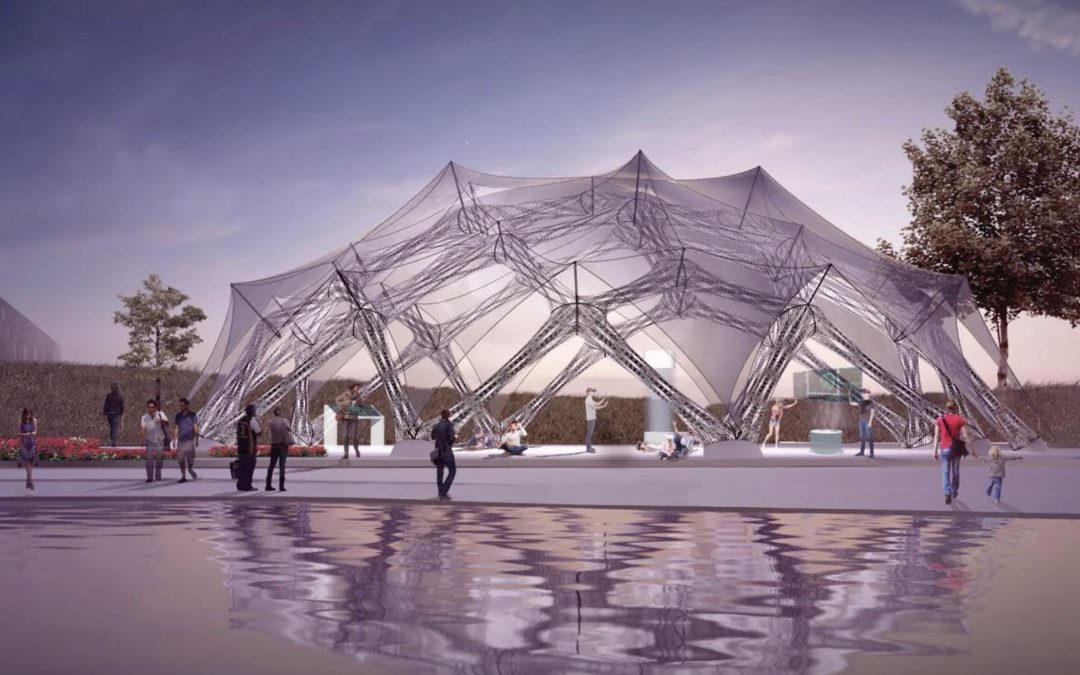
by Purba | Sep 20, 2021 | Academic |
What is Architecture Fabric?
Architecture fabric, in one sentence, is the fabric used in architecture by manipulating the different properties of textile fibers to make fabric suitable of manifesting architectural designs into reality.
Each textile fiber has its own set of characteristics. As a result, different fibers can be used on different grounds according to requirements and made into architecture fabric-the new use of textile as a building material, which is more suitable, durable and sustainable than concrete or other conventional materials.
High-performance fibers are synthetic fibers in which high added value textile properties like high tensile strength, high modulus, greater elongation, higher operating temperature, higher chemical resistance, higher durability etc. are found. These are mostly used as architectural fabric.
Why Architecture Fabric is Used?
Textile fibers are used in architecture for being light in weight, for higher tensile strength, higher elongation, resiliency, thermal insulation etc. By combining the need of the construction sector and the properties of textile fiber, architecture fabric or architectural fabric (a technical textile) has opened a new horizon between these two sectors.
Architecture fabrics are now used for building safety, earthquake resistance, UV protection, noise prevention, tear resistance, bacteria resistance, insulation, visual protection, water vapor impermeability, air conditioning and protection from rain, sun, wind, fire.
Textile as Architectural Membrane
Textile is considered as the 5th material which is used in architecture like timber, stone, metal and glass. The tent is the oldest version of using textile in architecture which is used for separating an environment or space from nature. The tent is the oldest version of the dwelling also. The Nomad used it as a covering of their living place. They carried tents for the convenience of moving them from one place to another.
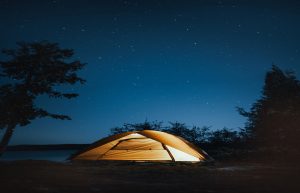
Tent, the the oldest version of using architecture fabric, more accurately ‘architectural fabric’. Courtesy: Pexels.com
From when human started to settle down in a specific place, the use of textile to make dwellings started to be neglected. But now, textiles are also used as membranes for various architectures.
Elie Tahari Fashion Showroom is the creation of an architect named Gisela Stromeyer. To make this, she has used fabric instead of the concrete wall to enhance the space.

Elie Tahari Fashion Showroom, created by Gisela Stromeyer. To make this, she has used architecture fabric instead of the concrete wall to enhance the space. Courtesy: Architonic, Photographer: © Michael Moran
This aesthetic design also allows natural light to enter the room and reduces artificial lighting costs. This transportable membrane can be folded when it’s not needed.
DAR LUZ is also an example of the temporary installation of textile fabric in which fabrics are stretched over a wooden structure.
Tubaloon is a textile sculpture. The membrane of this sculpture is made from a special PVDF (Polyvinylidene Fluoride) fabric coated with PVC (polyvinyl chloride) which is weather-resistant and also diffuses light onto the surface.
Translucent PTFE coated glass fiber is used in the tall atrium of Burj Al Arab Hotel of Dubai which can withstand large-scale temperature variation, sandstorms and fire.
This membrane is highly UV resistant, non-combustible and also allows natural daylight with sufficient shading. It has also the property of self-cleaning after raining.

Burj Al Arab Hotel, Dubai. Courtesy: Pexels.com
Fabric Structure in Architecture
The history of using fabric structure in architecture is too old. The first initiative of developing architectural fabric structures came from the advantage of using the sail.
In the first century BCE, Roman used “Textile sunshade roof system” in theatres, circuses, amphitheaters and stadiums. And that was made by reusing the old naval sail. That step opened a new door for the use of fabric structures in architecture.
Now, the use of fabric structure is increasing for lightweight, cost-effectiveness, easy portability, easy reconfiguration, lower energy consumption, durability, environment sustainability, ventilation, less construction period and so on.
Tensioned fabric structures are divided into three groups named (a) Boundary Tensioned Membrane (b) Pneumatic or Air supported Structure (c) Cable-net. Anticlastic and Synclastic are two structural forms that are used to stabilize fabric structures in architecture.
To stabilize a membrane anticlastic structure is more effective. The synclastic structure is sometimes also referred to as an air-supported structure that is used as the roof of tennis courts, swimming pools or fields to control weather conditions.
The famous architecture fabric roof of Denver International Airport is an example of an anticlastic structure and it is made of double-layer PTFE-coated fiberglass membrane. This roof allows light to pass through the fabric and reflect 90 percent solar radiation.

The famous architecture fabric roof of Denver International Airport. Source: Wikimedia.
;Earlier, cotton was used as a material of fabric structure element.
In modern days, coated and laminated fabrics are used as fabric structures to increase strength, durability and various properties.
Polyester, nylon, aramid, fiberglass are most commonly used as structural fabric.
PVC, PTFE and Silicone are the most common coatings of structural fabrics.
People who are Working with Architectural Fabric
Gisela Stromeyer, a famous artist and architect, whose aesthetic and creative works with architectural fabrics are getting admired worldwide.

Gisela Stromeyer. Source: Architonic.com
Instead of the concrete wall, she has used architectural fabrics to increase space.
The ancestors of Gisela Stromeyer were tentmakers. Peter Stromeyer, the father of Gisela Stromeyer, worked with Frei Otto.
Frei Otto is considered the founder of the fabric tension structure industry. Frei Otto focused on lightweight structures. One of his paper publications, based on lightweight structures, inspired an architect named Hans Spettbacher to use a double layer of cotton fabric in the design of the Swiss Pavilion.
Later on, the combined work of Peter Stromeyer and Frei Otto played a vital role in the upcoming field of the tensile fabric structure. The use of tensile fabric structures got started.

Frei Otto is considered the founder of the fabric tension structure industry. One of the founding of architecture fabric. courtesy: flickr.com
Munich Olympic Stadium, Multihalle in Mannheim, The Tuwaiq Palace, The German Pavilion are some of his renowned projects in which he used fabric for lightweight structure.
Kengo Kuma is a Japanese architect who has used architectural fabrics for sustainable architecture. ‘We Hotel Toya’ and ‘House in Hokkaido’ are two of his famous creations.

Munich Olympic Stadium Courtesy: Wikimedia.org
Textile as a Construction Material
Nowadays, textiles are not only used as temporary elements but also permanent elements of architecture.
Build tech is the sector in which textiles are used in construction.
When textile materials are used with concrete, various properties such as protection against UV and electromagnetic radiation, earthquake resistance, fire retardant, antibacterial property get increased.
Textile Re-enforced Concrete (TRC) is now being used as construction material to a great extent for various advantages.
The textile fibers used for TRC are glass-fiber, jute, kevlar, nylon, polyamide etc.
TRC gives higher strength compared to its weight than steel. Its durability is also greater than steel.
TRC is more corrosion resistant. It can also be used as a protective layer of old constructions. Moreover, fiber-reinforced cement or concrete are highly used in structural application which can bear electro-mechanical deterioration. It can also prevent the effect of alkali, acid and salt.
Textile in Earthquake Resistance
Earthquake resistant technology indicates that the building or structure should be made in such a way that the horizontal movements of quakes be absorbed before they reach to the building.
Moreover, to be earthquake resistant, material has to be bent out of the shape without making any failure.
Steel and concrete have to bear large seismic force as this force is proportional to the mass of the structure. Steel and concrete which are usually used in construction cannot withstand this strong seismic force.
If lightweight textile materials are used there, the seismic force will be less also.
Newly invented PVC-ECC (Polyvinyl alcohol fiber-reinforced engineered cementitious composite) has high tensile strain capacity and ductility which can absorb energy from earthquakes & resist seismic force to save buildings.
Fiber-reinforced cement (FRC) is made of high-strength fiber set in a resin matrix.
The use of high-strength fiber & elastomeric polymer in the wall can make the wall stronger against seismic load.
Lightweight & high-strength aramid fibers are used in wall construction to prevent walls from breaking during rebound.
A jacket made from glass fiber and isophthalic polyester resin is now used to reduce the risk of seismic force.
The column is surrounded by the jacket. The jacket prevents concrete to expand due to a rise in temperature or seismic forces.
Thus jackets made from high-performance fiber-glass are used to get protection from the earthquake.
For repairing concrete bridge, carbon FRC is more desirable than steel for its lightweight. Concretes are wrapped with carbon fiber to prevent tensile crake.
Compressive strength is also higher in a wrapped one. For wrapping, steel is not a solution for the issue of environmental attack.
Carbon FRC has no environmental attack issue. So it is preferred in this sector.
Wrap of one layer increases the strain 6 times which has great importance for resisting earthquakes. But in this case, glass fibers are more preferred for having low stiffness and for not costly as carbon.
A three-storied building in Japan has been covered by carbon string. These carbon strings are made of thermoplastic carbon fiber composite. The lighter carbon string rods are seven times stronger than iron.
As a result, during earthquakes buildings don’t fall down, just sway together. This structure looks like spider webs in which rods are tied to the roof and gripped on the ground.
Nano-textile is also used in the construction industry to make concrete lighter, stronger, resistant to earthquakes. Seismic wall paper is used to increase resistance to crack and collapse.
Seismic wallpaper is made based on reinforced textile composite which incorporates several elements such as multiaxial warp knitted glass, polymer fiber and nano-particle enhance coat.
Insulation and Textile
Textiles materials or recycled textiles are considered as the best insulating material as it’s not as harmful to health as stone wool, glass wool etc.
The porous structure of non-woven textiles has made textile material as a perfect element of thermal and sound insulation.
Sheep wool is a highly insulative material. It is used in the wall which gives the indoor a cozy atmosphere. But for being expensive, wool and cotton are not used normally. Moreover, waste from textile fiber has played a vital role to use as an insulator.
Thermobond is an insulation product which is developed by Scottish Research and Design Studio. Wool and polyester is the element of this Thermobond. It has higher thermal conductivity.
A French recycling company has also made a thermal insulation product called ‘Mettise’ which is used for insulating of ceiling roofs and walls. Recycled fiber, cotton, wool, polyester are used as a binder in this product.
Mermet is a solar protection fabric that can maintain thermal insulation in a house.
Textile as Acoustic Material
Acoustic materials can absorb sound to make the environment noise-free or soundproof. The energy of sound from the environment is absorbed by the porous structure of elements used in-wall or any construction. And in this section, non-woven textile works properly for their porous structure.
For good sound absorption properties of fiberglass and non-woven fabrics, these are used for soundproofing of the wall.
To make a soundproof wall, three or more than three layers are used. The second layer made of fiberglass and non-woven fabric is used to sound absorption and this layer is cover by the first one.
The last layer is fixed with the wall and it is made of plywood or timber frame.
When sound waves strike on an acoustic layer, the particle of acoustic material start to vibrate and create heat energy. The absorbed sound energy is come out as heat energy.
The using of textile in architecture is increasing day by day. The manufacturing process of textile materials is easy and more time-saving than any other construction materials. Almost 11% of technical textiles are used in the build tech sector. As much innovation can be brought in the technical textile sector, the use of textile in architecture will be increased continuously.
Sumita Bhattacharja Joly
Bangladesh University of Textiles
44th Batch.
Reference:
Now as you have read about ‘Architecture fabric’, you can also read our another special article ‘Invisible cloak technology’!
Invisible Cloak Technology
You can also read our well researched article on Fast fashion vs slow fashion here!
You can also read this premium article on the 21st century fashion!































